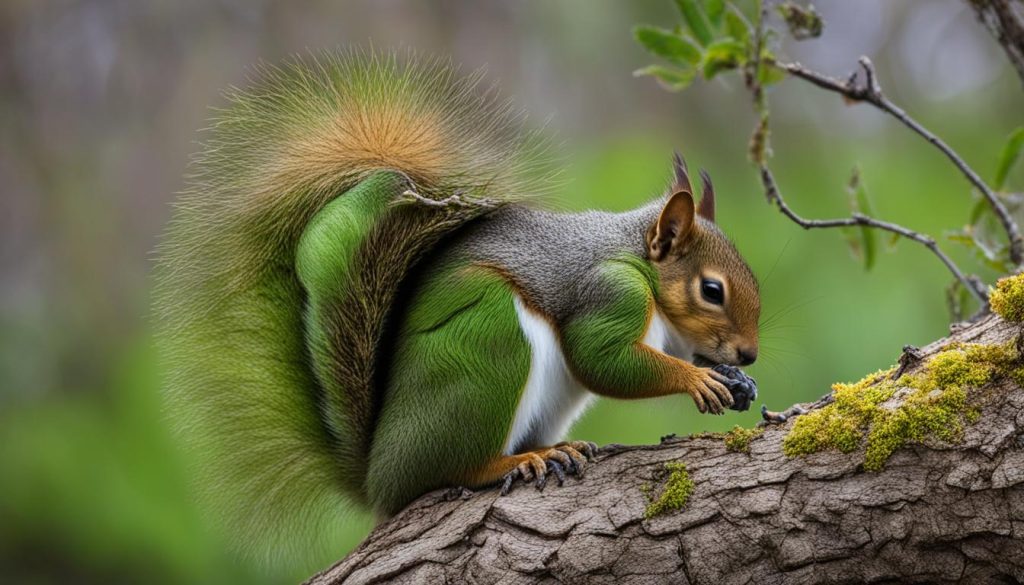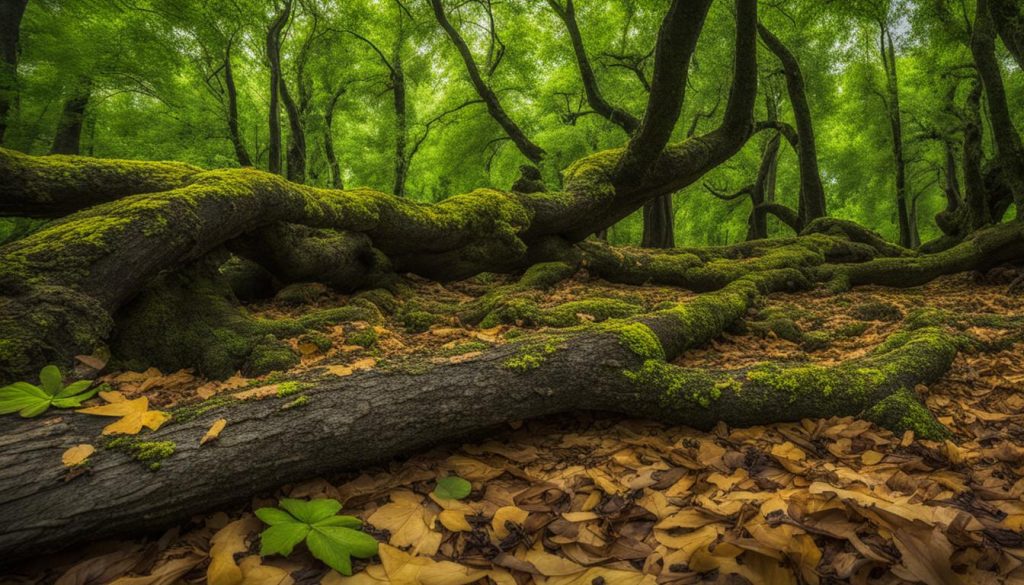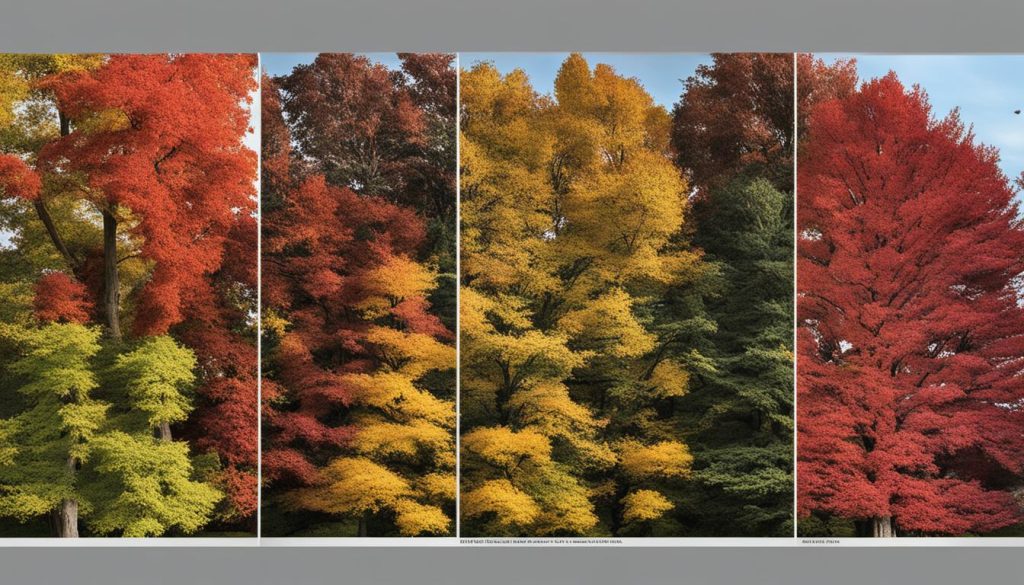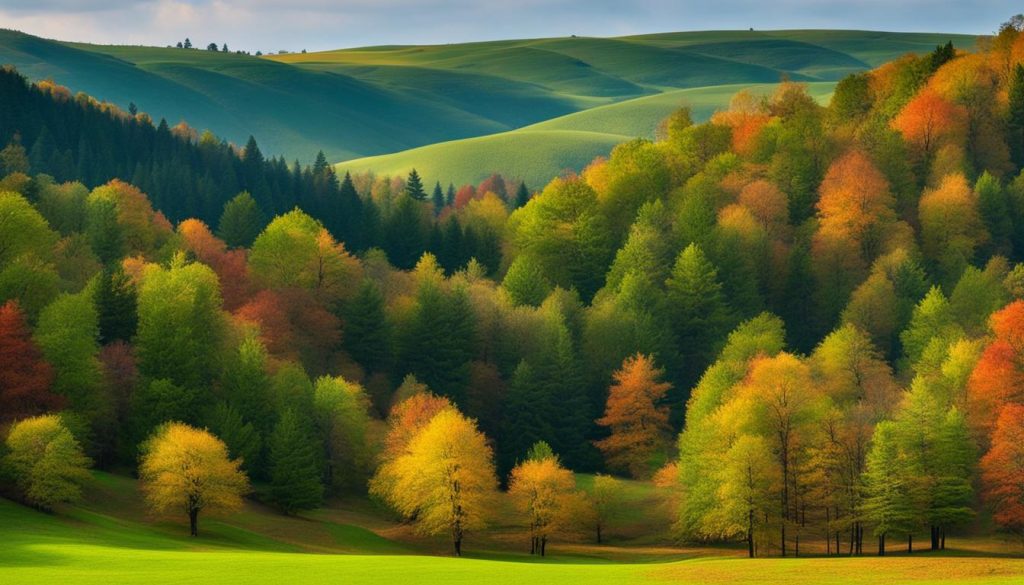Welcome to the wonderful world of tree landscaping in the Canadian landscape! Trees are a beautiful and essential addition to any outdoor space. Not only do they provide shade, privacy, and aesthetic value, but they also offer numerous environmental benefits. At Landscape Designer, we are passionate about helping you choose, plant, and care for the perfect trees for your property.
Tree landscaping is a rewarding and worthwhile investment in any Canadian landscape. Trees are beneficial to the environment, providing oxygen and reducing air pollution. They also offer a natural habitat for wildlife, increasing local biodiversity. A well-planned tree landscaping project can increase the value of your property and enhance the overall appearance of your outdoor space.
Choosing the right trees for your landscape can be a daunting task. With so many species and factors to consider, it’s easy to feel overwhelmed. That’s where we come in. Our team of experts can help guide you through the process of selecting the perfect trees for your property. We’ll take into consideration your climate, soil conditions, and aesthetic preferences to help you make an informed decision.
Once you’ve selected your trees, it’s essential to plant and care for them properly. Our team can provide you with expert guidance on best practices for planting, watering, and pruning to ensure your trees grow healthy and strong. We even offer tree pest and disease prevention and treatment services to help protect your trees from potential threats.
At Landscape Designer, we are dedicated to providing you with the highest quality tree care services in Canada. Let us help you enhance your outdoor space with beautiful and thriving trees.
Benefits of Tree Landscaping
At Landscape Designer, we’re passionate about tree landscaping and the vast array of benefits it offers. From enhancing the visual appeal of your property to providing numerous environmental advantages, there are countless reasons to incorporate trees into your landscape design. Let’s explore some of the benefits of tree landscaping.
-
Increase Property Value
Did you know that well-placed trees can increase the value of your property? Trees add curb appeal and can make your home more attractive to potential buyers.
-
Improve Air and Water Quality
Trees are natural air purifiers, absorbing pollutants such as carbon dioxide and releasing oxygen into the atmosphere. They also help filter rainwater, promoting cleaner runoff and reducing erosion.
-
Provide Shade and Privacy
Trees offer natural shade, reducing the amount of sun exposure and heat that enters your home, which can lower your energy costs. Additionally, trees can help absorb noise and create a natural barrier for privacy.
-
Increase Biodiversity
By incorporating a variety of tree species into your landscape, you can promote biodiversity and provide habitats for wildlife. Native trees in particular can support local ecosystems and help preserve our natural heritage.
-
Create a Relaxing Environment
Trees offer a calming effect on the mind and body, and can even help reduce stress. Incorporating trees into your outdoor space can create a tranquil environment and promote a greater sense of well-being.

As you can see, the benefits of tree landscaping are numerous and varied. Whether you’re looking to enhance your property’s value, create a sustainable environment, or simply enjoy the beauty of nature, trees are an excellent addition to any landscape design.
Selecting the Right Tree Species
Choosing the right tree species for your landscape can be a daunting task, but it doesn’t have to be. At Landscape Designer, we’re here to help you every step of the way. When selecting the perfect tree, several factors need to be considered.
Climate and Soil Conditions
Climate and soil conditions are crucial in determining the type of tree that will thrive in your landscape. Different trees are suited to different environments, so it’s important to take into account factors such as temperature, rainfall, and soil type. Our team can help you determine the ideal tree species for your specific location.
Desired Aesthetics
When selecting a tree species, it’s essential to consider the desired look and feel of your landscape. Are you looking for a tree that will provide shade, add privacy, or add visual interest? Our team can help you select a tree species that will meet your specific design goals.
Native Trees in Canada
Native trees in Canada are proven to thrive in local environments and provide an array of benefits, making them an excellent choice for landscaping. Some popular native trees in Canada include the Eastern White Pine, Sugar Maple, and White Birch. Our team can provide you with more information on these and other native tree species, helping you make an informed decision.
At Landscape Designer, we understand the importance of selecting the right tree species for your landscape. Let us help you make an informed decision that will enhance the beauty and value of your property. Contact us today to learn more about how we can assist you in selecting the perfect tree species for your Canadian landscape.
Tree Planting Guidelines
Planting a tree can be an exciting and fulfilling experience. However, it’s essential to follow proper techniques and guidelines to ensure your tree thrives and establishes successfully. Here are some best practices for planting trees:
Site Preparation
The first step in planting a tree is selecting an appropriate location. Look for an area that provides adequate sunlight, good soil drainage, and sufficient space for the tree to grow to its full size. Clear the area of any grass, weeds, or debris, and dig a hole that’s twice as wide as the root ball and just as deep.
Planting the Tree
Gently remove the tree from its container or burlap sack, and carefully loosen any tangled roots. Place the tree in the center of the hole, making sure the root collar is level with the surrounding soil. Backfill the hole with the native soil and water the tree thoroughly to settle the soil and remove any air pockets.
Proper Planting Depth
Planting at the correct depth is crucial for the tree’s health and growth. Make sure the root flare or collar is slightly above the soil surface. Planting the tree too deep can lead to poor root development, stress, disease, and even death.
Watering and Mulching
Water the tree deeply immediately after planting and regularly throughout the first growing season. Applying a layer of mulch around the base of the tree can help retain moisture and suppress weeds. However, be sure to keep the mulch away from the trunk to avoid potential disease or pest issues.
Staking and Guying
In some cases, staking and guying may be necessary to provide support and stability for the tree. However, avoid over-staking, as it can limit the tree’s natural movement and development. Remove the stakes and guy wires after one or two growing seasons, or when the tree can stand on its own.
By following these tree planting guidelines, you can help ensure the health and longevity of your newly planted trees. Happy planting!
Tree Care and Maintenance
Keeping your trees healthy and happy requires regular care and attention. Here are some tips to keep in mind:
Watering Trees
Proper watering is essential for trees, especially during their first few years of growth. Newly planted trees should be watered deeply once or twice a week, ensuring the soil is thoroughly moistened. As trees mature, they typically require less frequent watering but still need regular attention during dry spells. Be sure to water at the base of the tree, avoiding the leaves and branches.
Pruning Trees
Pruning is an important aspect of tree care as it helps to promote healthy growth and control the size and shape of the tree. When pruning, be sure to remove dead, diseased, or damaged branches first, cutting them back to healthy wood. Next, remove any crossing or rubbing branches, as these can cause wounds and invite pests or diseases. Finally, shape the tree by removing any unwanted or unnecessary branches.
Fertilizing Trees
Fertilizing can help to maintain the health of your trees, especially in nutrient-poor soil. Choose a fertilizer that is specifically designed for trees, and follow the instructions carefully. Apply in the spring, just before new growth begins. Avoid fertilizing in the fall as this can stimulate new growth that may be damaged by cold winter weather.
Addressing Common Tree Care Challenges
Despite your best efforts, trees can sometimes face challenges such as insect infestations, diseases, or weather-related damage. If you notice any issues with your trees, it’s important to address them promptly, before they have a chance to cause further harm. Consult a professional tree service if you’re unsure about how to approach a specific problem.
By following these tree care tips, you can help ensure that your trees remain healthy, vibrant, and beautiful for years to come!
Dealing with Tree Pests and Diseases
We understand that dealing with pests and diseases can be a frustrating experience for any homeowner. That’s why we’re here to help you identify and address common tree pests and diseases in Canada.
Common Tree Pests
Some of the most common tree pests in Canada include the emerald ash borer, spruce budworm, and gypsy moth. These pests can cause significant damage to trees, weakening their structure and reducing their overall health.

The emerald ash borer, for example, is a beetle that attacks ash trees, while the spruce budworm feeds on the needles of spruce trees. Gypsy moths can defoliate entire trees, leaving them vulnerable to other pests and diseases.
Tree Diseases
Common tree diseases in Canada include Dutch Elm Disease, Oak Wilt, and Apple Scab. These diseases can cause leaf discoloration, tree defoliation, and even death in some cases. Identifying and addressing these diseases early is crucial to the health of your trees.

Dutch Elm Disease, for example, is caused by a fungus that affects the water-conducting vessels in the tree, leading to wilting and eventual death. Oak Wilt is another fungal disease that targets oak trees, causing leaf discoloration and tree death. Apple Scab is a fungal disease that affects apple trees, causing leaf spots and reduced fruit production.
If you suspect that your trees may be infected with pests or diseases, it’s important to contact a professional tree care provider like us. We can help you identify the problem and develop a treatment plan that will restore your trees to health.
Don’t wait until it’s too late – reach out to us today for expert guidance and assistance.
Hiring a Professional Tree Service
Why Consider a Professional Tree Service?
If you’re not confident in your ability to care for your trees or have a large property with numerous trees, hiring a professional tree service could be the right choice for you. Our team has the knowledge, skills, and experience needed to provide excellent tree care and maintenance services, so you can sit back and relax while we take care of your trees.
The Benefits of Professional Tree Care
When you work with us, you can expect a range of benefits. We use specialized equipment to safely and effectively perform services such as pruning, tree removal, and stump grinding. Our team is also well-versed in the latest tree care techniques, so we can provide you with expert advice on how to keep your trees healthy and thriving.
Our Professional Tree Services
At Landscape Designer, we offer a variety of tree care services, including pruning, trimming, planting, and removal. We can also diagnose and treat tree pests and diseases to keep your trees healthy. Our team is fully licensed and insured, so you can have peace of mind knowing your property is in good hands. Visit our gallery to witness the excellence of our work.
FAQ
Why are trees important in the Canadian landscape?
Trees play a vital role in the Canadian landscape by providing shade, improving air and water quality, and enhancing the overall beauty of outdoor spaces.
How do I choose the right tree species for my landscape?
When selecting a tree species, consider factors such as climate, soil conditions, and the desired aesthetic. Native trees in Canada are often a good choice as they are well-suited to local environments.
What are the benefits of tree landscaping?
Tree landscaping offers various benefits, including providing shade, privacy, and improved air and water quality. Trees also contribute to a more sustainable and visually appealing landscape design.
What are the best practices for planting trees?
Proper tree planting involves site preparation, digging the hole to the appropriate depth, and ensuring the tree is well-watered after planting. Following these guidelines will help promote successful tree growth.
How can I care for and maintain my trees?
Tree care involves regular watering, fertilizing, and pruning. It is important to provide adequate nutrients, water, and remove dead or diseased branches to keep your trees healthy and thriving.
What are some common tree pests and diseases in Canada?
Common tree pests in Canada include aphids, emerald ash borers, and tent caterpillars. Tree diseases such as Dutch elm disease and oak wilt can also be problematic. Proper identification and treatment are crucial in managing these issues.
Should I hire a professional tree service?
Hiring a professional tree service can be beneficial, especially if you’re unsure about handling tree care on your own. Professional tree services have the expertise and equipment to provide proper maintenance, ensure tree health, and address any potential issues.

